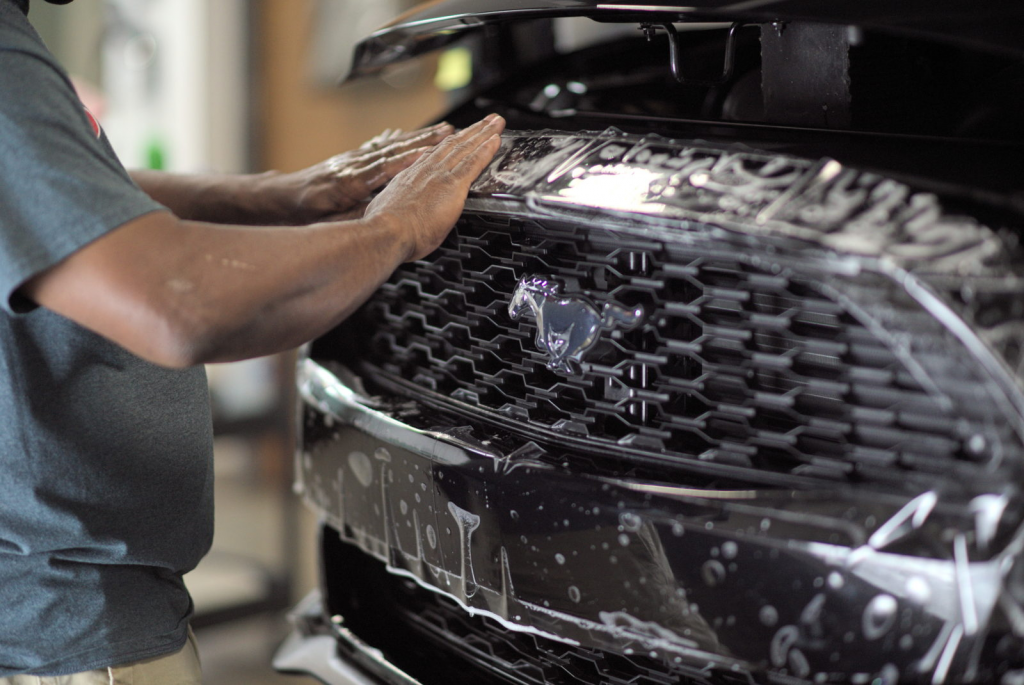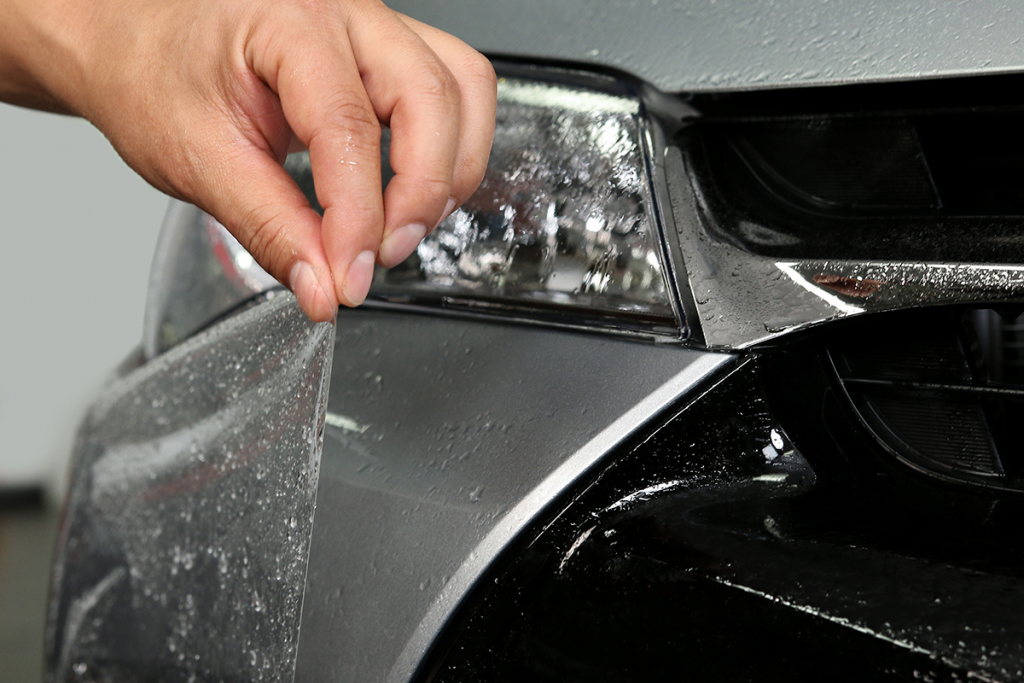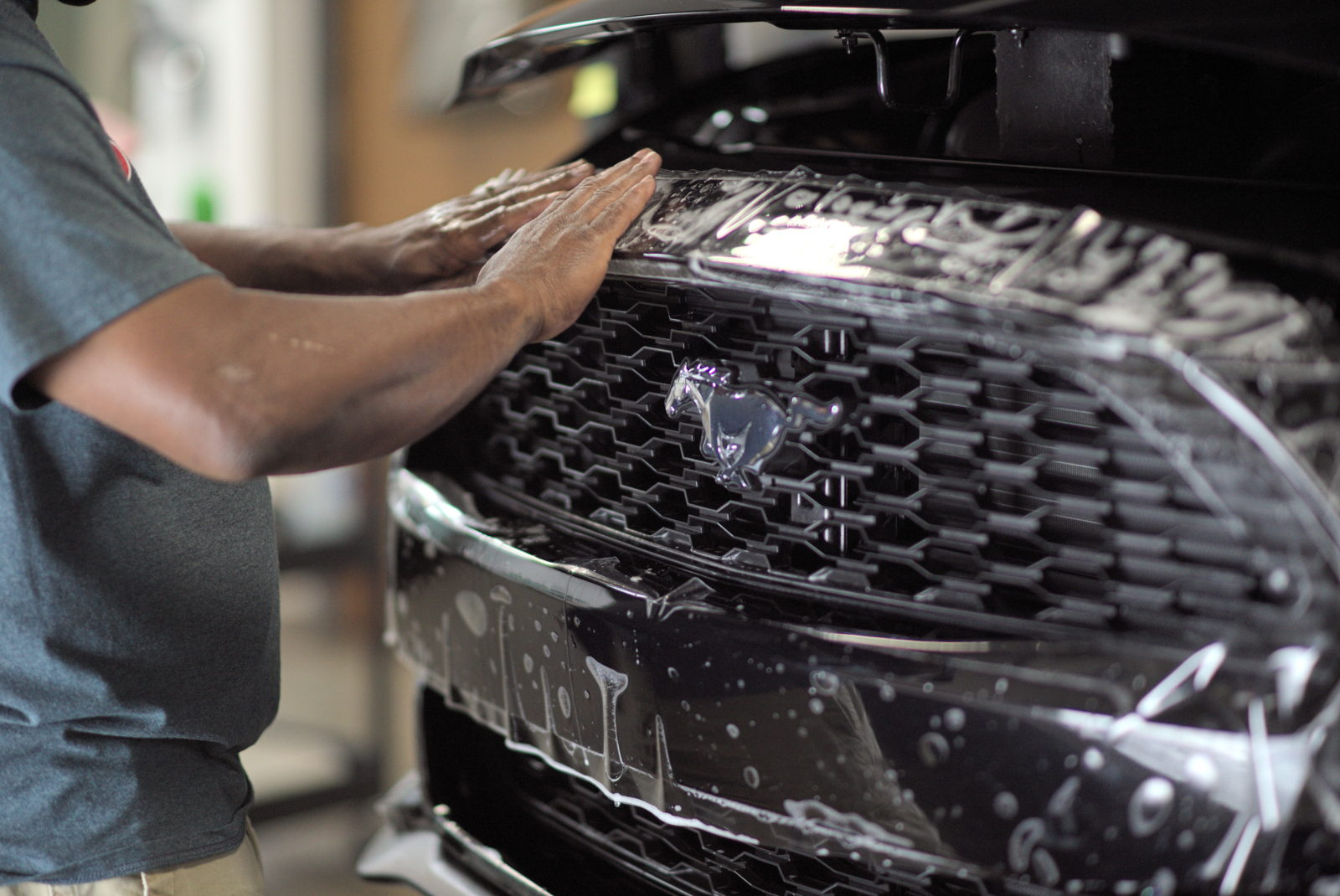
As an assistant director at a career and technical center, one of my diverse responsibilities included overseeing a fleet of driver’s education vehicles. These vehicles often exhibited deep rusty scratches on their roofs, a consequence of the removal of the bright yellow Student Driver identification “car toppers” before sending them through the car wash.
To address this issue, our auto collision repair program students took on the task of fixing the damage and subsequently applied paint protection film (PPF) to ensure the vehicles’ continued pristine appearance.
Initially developed for safeguarding helicopter blades from wear and tear, PPF gained prominence in the 1980s for protecting clear-coated horizontal painted surfaces against acid rain etching. Presently, PPF finds application in covering entire vehicles, providing bumper-to-bumper protection.
Understanding Paint Protection Film
According to Grant Menard, a certified PPF installer and the owner and CEO of Menard Premium Detailing in Warminster, PA, it’s important not to confuse PPF (also referred to as a “clear bra”) with vinyl wrap. These two options differ in terms of composition, installation process, and their respective functions.
PPF is a transparent layer that safeguards vehicle paint against nicks, scratches, chemical stains, road salt damage, and discoloration caused by harmful ultraviolet (UV) radiation. On the other hand, vinyl wrap offers minimal paint protection, primarily focusing on color or graphic customization and visual enhancement, making it a more budget-friendly alternative to a complete repaint job.
Thermoplastic polyurethane stands as the key component of PPF, as highlighted by 3M. Conversely, vinyl, as per Vinylinfo.org, is derived from chlorine, ethylene, and additives, endowing it with specific properties suitable for particular applications, ranging from flexibility to resistance in varying environmental conditions.
Pros and Cons of Paint Protection Film
With the average age of cars in the U.S. exceeding 12 years, the task of safeguarding and maintaining a vehicle’s paint finish can be both time-intensive and costly. The application of PPF presents itself as a solution to preserve a factory-fresh appearance, though its suitability varies from person to person.
Pros:
- Offers exceptional protection against oxidation, environmental factors (such as bird droppings and leaf stains), and damage caused by everyday road debris.
- Safeguards against swirl marks, fading, and fine surface cracks, maintaining the factory paint finish.
- Can adhere to various non-porous surfaces, extending its application to windshields, headlamps, tail lamps, wheels, and interior trim.
- Transparent and UV resistant.
- Possesses self-healing properties when scratched.
- Compatible with being installed over vinyl wrap.
- Boasts a lifespan of up to ten years when properly applied and maintained, while vinyl wrap lasts less than five years.
- Offers flexibility in coverage extent; it’s not mandatory to cover the entire vehicle.
- Removal process is straightforward without causing damage to the paint.
- Available in clear, gloss, satin, matte, high-gloss metallic, and tinted finishes.
Cons:
- Installation can be challenging and demands expertise.
- Replacement costs might not be covered by insurance after an accident.
- May not shield against all stone chipping or damage from airborne road debris when traveling above 60 mph.
- Demands extensive surface preparation prior to installation.
- Possibility of peeling, discoloration, or blistering due to improper installation or insufficient maintenance.
- May necessitate the addition of a ceramic coating.
- Does not restore paint that is already damaged.
- Requires exclusive hand washing using tried-and-true car washing techniques.
- Not available as a factory-installed option for new cars.
According to Menard, if you possess the time and patience, the installation of paint protection film can serve as a do-it-yourself (DIY) project. He advises commencing with flat surfaces such as the hood and roof before venturing into more complex curved sections like fenders and bumpers.
Menard emphasizes that meticulous surface preparation and proper maintenance are crucial for extending the longevity of paint protection film (PPF). It’s advisable to verify whether the manufacturer will honor the warranty for DIY installations. Pre-cut kits, available in various thicknesses, also facilitate less intricate DIY installations.
In his workshop, Menard employs a programmable plotter, a wide-format printer, to pre-cut PPF for customized fitting. He also cuts the PPF slightly longer to encompass exposed edges, a technique known as “rolling,” which significantly prolongs installation time. However, this meticulous approach effectively eliminates visible PPF seams around panel edges, headlamps, body seams, and door openings.
The cost of professionally installed PPF varies based on factors such as a vehicle’s uniqueness, age, paint condition, and the desired coverage extent.
A reputable shop typically performs the following steps:
- Thoroughly decontaminates the paint to remove embedded contaminants before PPF installation.
- Removes all exterior body trim, emblems, door hardware, headlamps, tail lamps, and even areas behind door handles, and wiper arms for seamless, comprehensive coverage.
Professional Installation Costs:
- Partial front coverage (hood, bumper, headlamps) ranges from $600 to $1,500.
- Full front-end coverage (hood, fenders, bumpers, headlamps, side-view mirrors) costs between $2,000 and $2,500.
- “Track” or “Highway” coverage, which includes the full front and areas susceptible to rock chips, falls within the range of $2,800 to $4,000.
- On average, complete coverage for a standard SUV or four-door sedan may cost $5,000 or more.
DIY Installation Costs:
- A 6- by 60-inch roll of clear PPF for small sections like the leading edge of the hood or door sills typically costs around $20.
- A 5- by 4-foot roll of black vinyl wrap is priced between $50 and $60.
Durability of Paint Protection Film:
- PPF comprises three robust polyurethane layers and an additional layer of acrylic adhesive.
- Especially resilient PPF variants featuring elastomeric polymers possess “self-healing” attributes, enabling the removal of chips or scratches through the application of heat or hot water.
- Some manufacturers offer a limited 10-year warranty against defects, yellowing, bubbling, or cracking for PPF professionally installed by authorized contractors.

